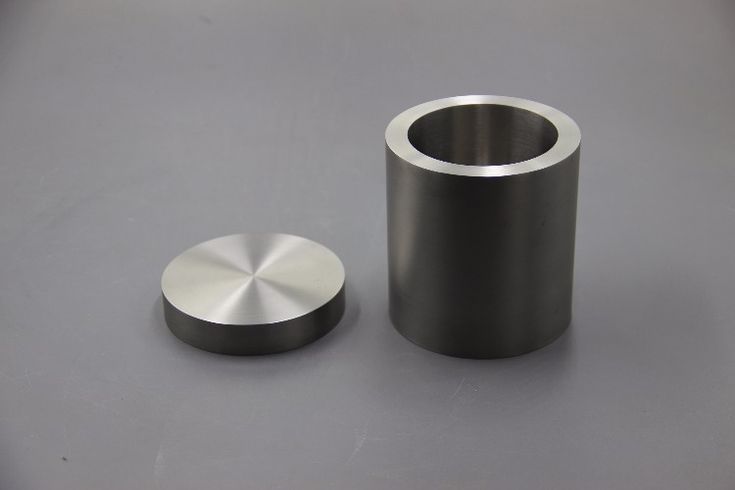
A tungsten-based crucible is one of the products of the tungsten metal. The melting point of tungsten can be as high as 3410. This allows the tungsten crucible to be divided into spinning, stamping forging, and sintering based on the manufacturing procedure.
Spinning Tungsten Crucible
It is the tungsten crucible that is produced by spinning. To prepare tungsten Crucible, the process of spinning forming can include flow spinning or conical conical components that shear spin.
First, tungsten billets were manufactured by powder metallurgy and then rolled into thin plates with the specified thickness using the process of hot rolling and then processed into sheets that were circular, which were then put in a hot spinning machine. The tungsten plate is concentric with the mold on the occasion. After spinning many times the tungsten plate transformed into a crusader. The thickness of the tungsten wall was less and it was more securely attached to the mold. After cooling the mold, the spinning small crucibles was achieved.
To provide heat, hydrogen and compressed gas are mixed during spinning. The heating temperature is approximately 1000?, and the wall thickness of each spin is set by a minimum of 0.5mm. If the processing rate exceeds 50 percent, 70%, or 1000, it is considered as a 1100. hydrogen insulation for a 1h an annealing procedure is typically used to eliminate internal stress and improve plasticity, in order to further spin.
Stamping Tungsten Crucible
It's a tungstencrucible made through stamping. This method has numerous advantages, including a high surface quality and a high utilization rate.
The manufacturing process typically consists of three stages: blanking, bent and drawing
1. Blanking refers to the process of separating materials. It involves cutting, blanking , and punching.
2. Bending is a process which makes use of pressure to create plastic deformation of material so that it is bent to form a shape that has a specific curvature as well as a specific angle.
3. Deep drawing is a method which involves the conversion of flat wool or process pieces into hollow parts as well as further shaping and sizing of hollow parts. Deep drawing creates hollow parts through the flow of material into the die. This is outside of the bottom of the die.
Tungsten Crucible Forging
It is the tungstencrucible which is prepared in the forging process. The process is comprised of three stages: blank preparation as well as forging and machining. The density of the crucible is usually higher than 19.0g/cm3 nearly reaching the theoretical density, however, its diameter is typically less than 100mm.
The strength of the tensile and deformation resistance of the tungsten crucible made through the forging process is higher than that produced by other methods.
The production process of forging tungsten crucible:
1. In accordance with the specifications of w crucible The dimensions and weight of the tungsten rod are calculated. The density of the relative is typically 90%-95%.
2. The tungsten-coated bar was heated to the blank's opening temperature (1400 1400 - 1600?) in the hydrogen furnace after which, following a time of heat preservation, the blank was forged, and then the bar was then heated before being forging again. After many forgings, the total deformation of the billet reaches 50% - 60%, and the shape size is in line with the size of the design, and after which the forging process is complete.
3. The forged billet must be processed and annealed according to the final product's dimension.
It is an isostatic pressure-sintering crucible steel. The process of isostatic pressure-sintering typically comprises an assortment of raw materials such as powder loading and isostatic pressure pressing high-temperature sintering and inspection of the finished product and many other processes. This is the most commonly used method of producing tungsten-crucible.
